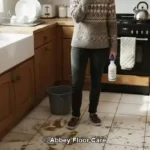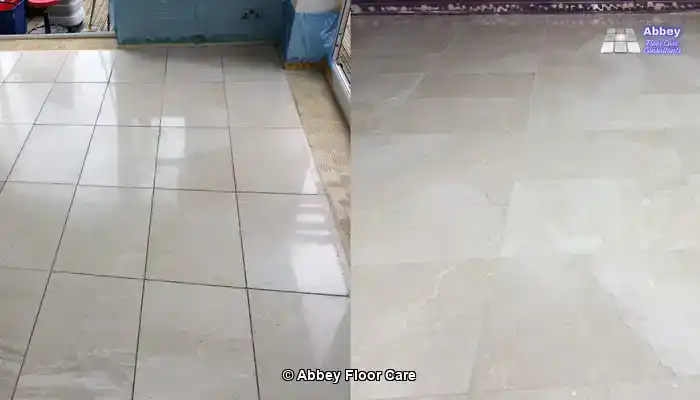
Last Updated on November 6, 2025 by David
Is It Possible to Restore Marble to Its Original Elegance?
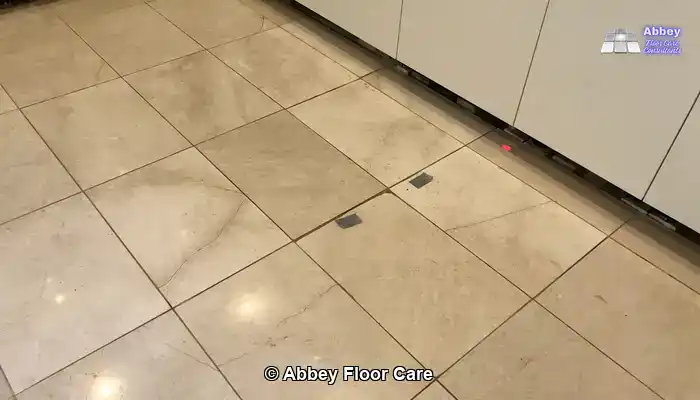
Top Marble Care Strategies for Homeowners in the UK
Marble is an esteemed material known for its luxurious appeal and timeless beauty. However, as time passes, it can lose the vibrancy, colour, and sheen that made it so attractive initially. Homeowners often face challenges such as scratches, dull areas, etch marks, and persistent stains, leading to concerns about whether their cherished marble can ever regain its original “like new” look. This detailed guide delves into the realistic possibilities of marble restoration, clarifying its limitations while providing valuable tips for maintaining long-lasting results. Whether dealing with acid damage, pronounced wear, or an exhausted appearance, understanding the restoration process empowers homeowners to make informed decisions regarding the future of their stone surfaces.
Defining “Like New” in the Context of Marble Restoration
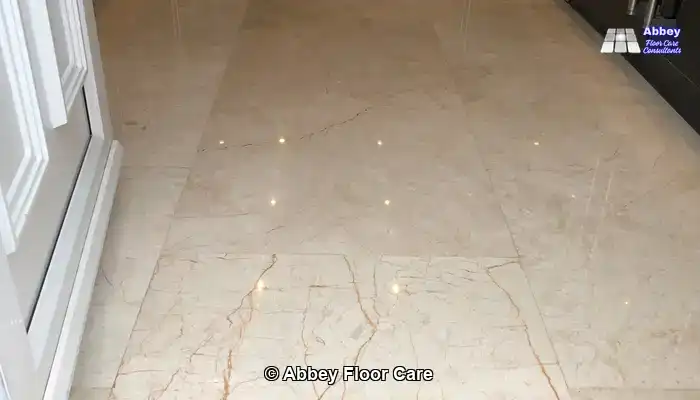
Bringing Back Marble’s Original Shine, Clarity, and Color Depth
When homeowners wish for their marble to regain a “like new” appearance, they usually envision restoring the original shine and clarity — the way light interacts with the surface, enhancing the natural depth of the stone’s colour. A successful restoration process can recreate this captivating effect by effectively removing surface damage while achieving a high-quality finish. The outcome is a floor that looks vibrant, smooth, and impeccably clean, often indistinguishable from a newly installed slab. It’s important to realize that reaching this level of restoration requires professional expertise and the correct techniques to ensure enduring results.
Identifying Cosmetic Wear Versus Structural Issues in Marble
It is crucial to differentiate between cosmetic wear and deeper structural problems when assessing the condition of your marble. Surface scratches, dullness, and light etching can typically be remedied through honing and polishing methods. However, more serious issues such as cracks, chips, and internal discoloration may not disappear completely. Restoration can greatly enhance the visual and tactile qualities of the marble, but it does not reconstruct the stone itself. A clear understanding of these distinctions helps to establish realistic expectations, ensuring satisfaction with the final results.
Understanding the Boundaries of Marble Restoration: What It Can and Cannot Achieve
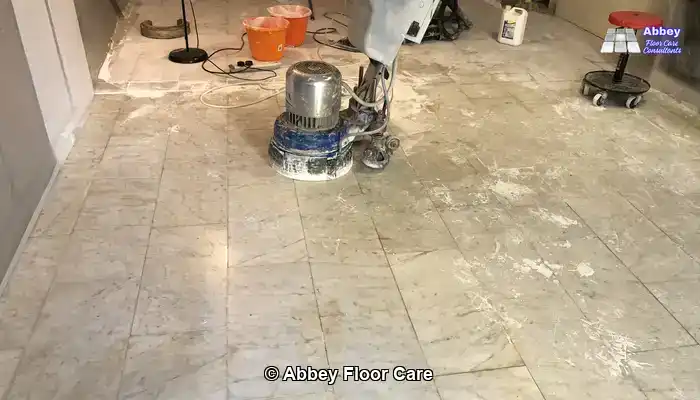
Effective Techniques for Addressing Deep Scratches, Chips, and Acid Etching in Marble
Restoration techniques can effectively eliminate most surface-level damage, such as scratches and mild etching caused by acidic substances like lemon juice or vinegar. These markings can dull the finish and obscure the stone’s natural clarity. However, honing and polishing methods can typically restore a smooth, reflective surface. Deep scratches and chips may necessitate more intensive procedures, such as grinding or filling. While the overall appearance can improve significantly, some flaws may persist, appearing faintly visible depending on their depth and location within the stone.
Recognizing UV Damage and Internal Discoloration Signs in Marble
Marble that has been exposed to intense sunlight over time may suffer from fading or yellowing.
Here’s a breakdown of the causes:
UV Ray Damage (Fading): Sunlight, particularly its ultraviolet (UV) rays, can lead to the natural pigments within the stone fading over time. This photochemical reaction causes the colour to become less vivid or appear “washed out.” This phenomenon is particularly noticeable in certain shades of marble.
-
- <a href=”https://www.abbeyfloorcare.co.uk/home-garden/travertine-floor-cleaning-service-expert-solutions/”>Yellowing</a>: Yellowing in white marble often results from prolonged exposure to UV light, which accelerates the natural discoloration process.
- Iron Oxidation: Many varieties of white marble contain trace amounts of iron. When exposed to moisture and oxidizers (like air or water), this iron can rust, a process that sunlight and heat can exacerbate, resulting in yellow or brown discoloration.
- Surface Degradation: UV rays can also break down any sealants or resins applied to the marble, leading to a yellowing effect and diminishing the overall appearance of the surface.
While marble is a resilient material, it is more vulnerable to UV-induced changes compared to tougher stones like granite or quartzite. This is particularly relevant for marble used in outdoor applications or indoor locations that receive prolonged, intense, direct sunlight (for instance, a sunlit windowsill or near a large, unshaded window).
To effectively safeguard your marble surfaces, it is often recommended to use:
- UV-resistant sealants that protect the surface from harmful rays
- Shades, blinds, or curtains for indoor settings
- Strategic placement to minimize exposure to direct sunlight.
While restoration can improve the surface’s appearance, it cannot reverse color changes that have developed beneath the surface of the marble.
What Do Before and After Images of Marble With Iron Oxide Stains Reveal?
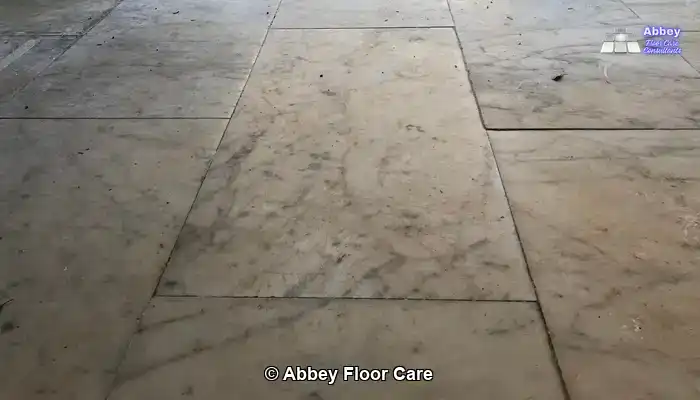
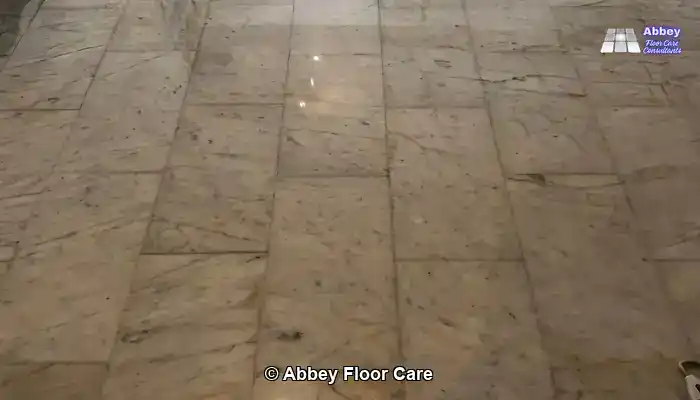
In cases like these, the focus shifts from attaining a “like new” look to achieving a cleaner, more uniform finish that minimizes visual distractions while enhancing the overall aesthetic appeal of the space.
Key Techniques in Honing, Polishing, and Comprehensive Restoration of Marble
Determining When Polishing Alone Suffices for Marble Restoration
Polishing acts as a surface-level treatment aimed at restoring shine by smoothing out fine scratches and improving the reflectivity of the marble. It is particularly effective for dull marble that remains otherwise intact. If the stone has lost its gloss due to light wear or minor etching, polishing alone may be sufficient to restore a “like new” appearance. However, it’s important to note that polishing will not resolve deeper flaws or rectify uneven surfaces that require more comprehensive treatment.
Identifying When Honing or Grinding Should Be Considered for Marble Restoration
Honing involves a more thorough process than polishing, as it removes a thin layer of the marble to eliminate scratches, etch marks, and surface damage. In cases of more significant wear, grinding may be necessary to level the stone and completely reset the finish. These methods are more intensive but yield dramatic results. When homeowners desire a truly refreshed surface — one that looks and feels like new — honing or grinding is often the necessary step to achieve that level of restoration.
Comparing DIY Kits to Professional Restoration for Marble Care
Realistic Outcomes of DIY Kits for Marble Restoration
DIY marble restoration kits typically include polishing powders, sealers, and basic tools designed to enhance surface shine and diminish the appearance of light etching. For small areas or slight dullness, these kits offer a budget-friendly solution to refresh the stone. However, it is critical to understand that they seldom deliver a true “like new” finish. Lacking access to professional-grade abrasives and specialized machinery means deeper imperfections often remain unaddressed, resulting in inconsistent outcomes across different sections of the marble.
The Importance of Professional Tools in Marble Restoration Processes
Professional restoration transcends basic tools, utilizing diamond abrasives, rotary machines, and graded polishing compounds that work in a systematic manner. This advanced equipment allows skilled technicians to level the surface, remove deep damage, and refine the finish with exceptional accuracy. DIY kits simply do not possess the power and control required for achieving consistent results over larger areas. For homeowners seeking a flawless and enduring outcome, the utilization of professional tools and experience can significantly influence the final appearance of the marble.
Expected Longevity of Restored Marble Appearance
Essential Steps for Sealing, Cleaning, and Managing Wear Patterns
After completing the restoration process, sealing the marble is a vital step that helps to preserve the finish by blocking moisture and reducing the absorption of stains. A high-quality sealer can protect the surface for 1 to 3 years, depending on foot traffic levels and usage. Regularly cleaning the marble with pH-neutral products while avoiding abrasive pads or acidic spills will greatly prolong the life of the restored surface. In high-traffic areas, the finish may gradually lose its luster over time, but with diligent care, the clarity and shine of the marble can be maintained for many years.
Is Restoration a Repeatable Process for Ongoing Marble Maintenance?
Absolutely, marble restoration is a process that can be repeated. If the surface becomes dull or scratched again, it can be rehoned and repolished to restore its former glory. However, it’s important to recognize that each cycle will remove a small amount of the stone, so it’s advisable to avoid excessive wear between treatments. Homeowners who maintain a consistent routine — which includes resealing and gentle cleaning — will find that restoration remains a worthwhile investment over time, keeping their marble looking beautiful and well-cared for.
Will Restored Marble Continue to Develop Patina Over Time?
Differentiating Between Natural Patina and Artificial Gloss in Restored Marble
Even after undergoing restoration, marble will continue to age naturally. Over time, subtle wear patterns, micro-abrasions, and environmental exposure contribute to the formation of a soft patina — a gentle sheen that reflects the stone’s unique journey. This natural development contrasts with the artificial gloss produced through polishing and sealing. A restored surface may initially look brand new, but as time passes, it will regain character. For many homeowners, this evolving finish adds charm and authenticity, especially in older properties where marble is a vital part of the home’s narrative and aesthetic appeal.
Common Inquiries Among Surrey Homeowners Regarding Marble Restoration
What Are the Average Costs Associated with Marble Restoration in Surrey?
The costs linked to marble restoration can vary based on several factors, including the size of the area, the marble’s condition, and the extent of restoration needed. Light polishing tends to be more affordable compared to comprehensive grinding and honing processes. In Surrey, homeowners often invest in restoration when the marble is situated in a highly visible area or as part of a long-term property enhancement strategy. While prices can differ significantly, the genuine value lies in preserving the stone and improving the overall appeal of the home.
Can All Types of Marble Be Successfully Restored?
Most marble types can indeed be restored; however, the achievable results will depend on the stone’s unique composition and current condition. Softer marbles may wear more quickly and respond well to polishing techniques. In contrast, harder varieties may require more aggressive honing methods. Some exotic stones, characterized by heavy veining or significant colour variation, may not return to a uniform finish after restoration. A professional evaluation is essential to determine what is realistically attainable for your specific flooring.
Will the Restored Finish Match the Original Marble Installation?
The primary goal of restoration is to replicate the original finish; however, the degree of exact matching will depend on how the marble was initially installed and treated. If the stone underwent factory polishing, the restored surface may display slight differences in gloss level or texture. Nevertheless, most homeowners find the end result visually consistent and significantly more appealing than the worn surface they initially had. The focus emphasizes improvement rather than perfection — and in most cases, the transformation is nothing short of remarkable.
The Article Will Restored Marble Ever Look As Good As New first found on https://www.abbeyfloorcare.co.uk
The Article Restored Marble: Can It Achieve a Like-New Finish? appeared first on https://fabritec.org
The Article Restored Marble: Achieving a Like-New Finish Was Found On https://limitsofstrategy.com

